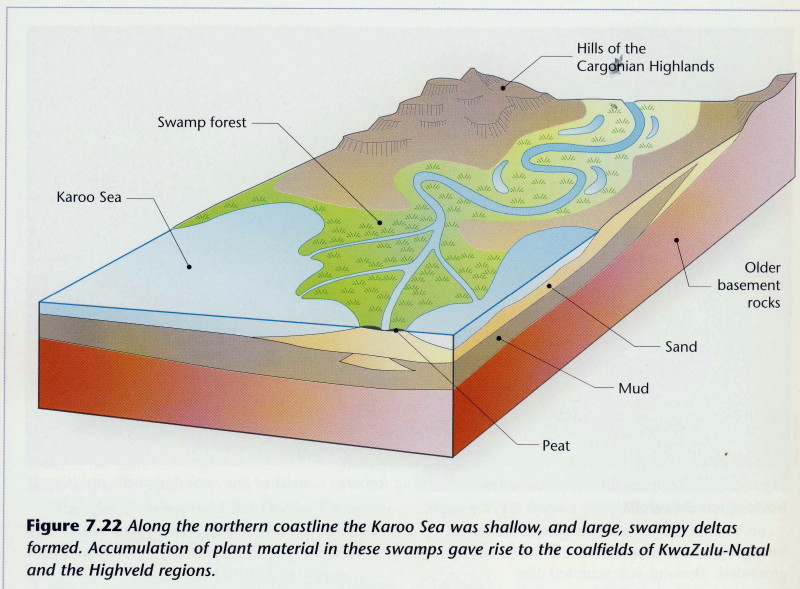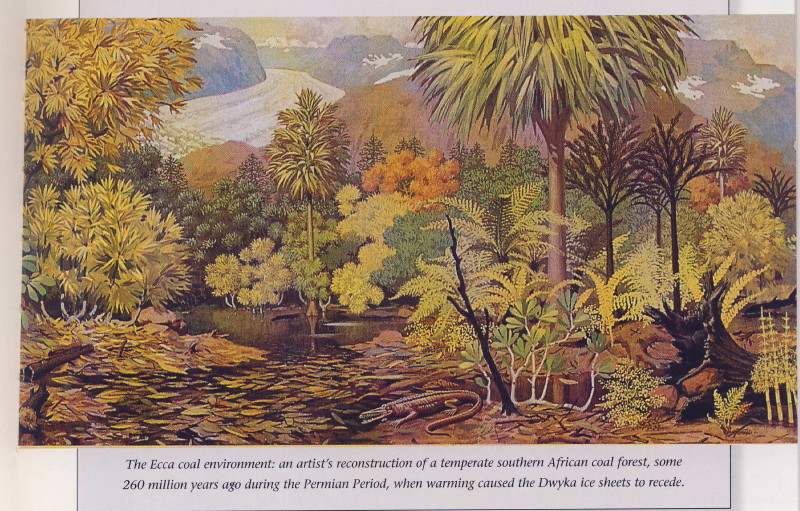Sak river day 8 Verneukpan to Kenhardt 090930 Wednesday 245km + 15km

This is the Hartbees river just before Kenhardt. The Sak river disappears into the Grootvloer but if there is a lot of rain the water flows out of the Grootvloer as the Hartbees river so it is the continuation of the Sak. Notice that the sand is red coloured. The colour comes from iron oxide (rust) in the sand. It is no coincidence that the Sishen iron mines are in land of this colour. The dolerite rocks are rich in iron so they ‘rust’ to the dark colour they are and break down into this red sand.

Social weaver nests.

And kokerboome. When the Sak becomes the Hartbees you also find the first of the social weaver nests and kokerboome.

I went into Kenhardt for fuel , melktert & rooibos tea then returned towards Brandvlei because I wanted to see what the Grootvloer looked like. I went south on the tar R27 then turned east on a gravel road that eventually joined up with the road I had ridden earlier in the day on my way from Verneukpan to Kenhardt. This picture is the start of the Grootvloer.

It is big and impressive.

From the geology thread; this is how the Grootvloer was formed.

And this is what grew there as it formed. These are the swamp forests that created the Highveld coal deposits. Plants had developed as the Cape Supergroup was being laid down 450 million years ago and were now well established. Big animals only appeared 290 million years ago so the plants had it pretty well their own way initially. I had those pictures in my mind as I cruised through the Grootvloer. I don’t understand why there is no coal in the Karoo if it looked like this – I may well be mistaken but it was a nice picture to have in mind.

Close to where I turned onto the gravel road were these outcrops dolerite with the dark colour I mentioned earlier.

Dolerite koppies on the vlaktes. I am wanting to emphasise the open space I was riding through. It was not very hot. I have a Cool Vest from Bikegear but was not wearing it as I rode through here.

Back onto the road I was on earlier with the Grootvloer ahead. I am now running back the opposite way (northwards) returning to Kenhardt.
Last bit of Trekboer & San History
In the extract from the pamphlet Elsa van Schalkwyk gave me there is this:
Quote:
Vir die meeste 19de-eeuse veeboere was vleis doodgewoon stapelvoedsel en brood 'n luukse waarsonder vir maande lank klaargekom kon word. Gevolglik het die sendelinge se tuinmaakidees, ten koste van veeboerdery, nie geredelik ingang gevind nie. By geleentheid het eerwaarde Beinecke byvoorbeeld geskok in sy dagboek k van 'n man vermeld wat so verknog was aan sy vleisdie6t dat hy dit prontuit gestel het dat hy sy mond nie aan brood sou sit nie omdat dit vir hum net soos klei gesmaak het. Vir hierdie man het eerwaarde Lutz se gereelde preke tydens droogtes dat "die liewe God dit weer goad geag het om die Easters se broodmandfle ietwat hoer te hang"' kennelik min indruk gemaak!
The mission was aimed at Khoikhoi and ‘Basters’ but what the quote says about meat being the staple diet of the pastoralists applies equally to the trekboers since they too were pastoralists. They were carnivores rather than omnivores and certainly not vegetarians. The difference between the Khoikhoi and the trekboere was that the Khoikhoi used their animals for their own needs only whereas the trekboere were supplying the VOC with animals so that they could buy goods such as clothes, liquour, ammunition and wagons etc. If they slaughtered their animals to provide food for themselves they had less to sell to the VOC. The obvious thing to do use the ‘abundant’ wild game as their food source. This brought them into direct competition with the San as they too were exploiting that same resource. But further to that the flocks and herds of the trekboer were competing with the game for the veld and this was exacerbated by the fact that the trekboers drove their animals following the best grazing thus largely excluding the game from the best veld.
The trekboers had three great advantages over the San in this competition – they had horses, guns and wagons. The eland was the preferred animal of the trekboers to make biltong; they had been shot out of the land west of the Sak river by the 1790s. Once the trekboers were established in the Roggeveld they penetrated deep past the Sak river in search of game to provide their food. The trekboers and San had been competing for the same resource – the wild game but the trekboers had been more successful because of their horses, guns & wagons (game cut up dried as biltong & taken out by the wagon load). The San could not provide for themselves because there was simply not enough game available to them. They had three options, move away, exploit the sheep and cattle as substitutes or starve to death. They elected to exploit the trekboer’s animals.
In response to the San raids on their sheep & cattle the trekboers raised commandos to recapture the animals and eliminate the ‘vermin’. It was a contest for resources – water, grazing and wild animals. The British tried to break the cycle by creating a no-crossing border along the Sak river but it was not successful because 1. The game available to the San was too sparse & 2. The trekboers continued to go after the wild animals across the Sak river. The San were largely exterminated by the commando raids and hunting raids. The survivors were forced to flee to the Kalahari. The San had exploited the game in a sustainable manner but the trekboers almost exterminated them – they did in the case of the blaubok (1800) and the quagga (1870s).
The Khoikhoi were, like the trekboers, pastoralists but they did not have the same hunting imperative as the trekboers because their animals satisfied their needs largely. The Khoikhoi and San were able to coexist amicably. The San were the original occupants of the territory; the Khoikhoi arrived in the Upington area about 500AD and continued to expand southwards wherever their sheep and cattle could go.

From the van Rensburg source (page d1). A drawing by Lichtenstein of the Kareeberg (Canarvon) area in 1803. Besides the ostriches there is other game to be seen there still. I include this drawing here simply because I like it & found it while looking for info to put here.
------------------------------------------------------------------------------------------------------------------

I got another puncture when I stopped to take a picture of this house. There is a thorn tree just off the picture on the right where I re-fitted yesterday’s tube (which I had repaired before I started this day so the patch had plenty of time for the chemical reaction to complete – more about my puncture problems in a separate thread sometime).

The powerline running across the Grootvloer is just where the Sak becomes the Hartbees.

This is a Prosopis . I thought it looked pretty good growing by the roadside.

But I was given the very informative pamphlet written by my landlady in Williston from which I learn that they are invasive trees from the USA. Here is what she wrote:
Quote:
Hoewel geen borne, in die Zakrivier voorkom nie, was die groot hoeveelhede riete in die rivier vroe & onontbeerlik vir die bou van mabieshuise en om dakke te dek. Ongelukkig is die indringerboom, die Prosopis, vandag 'n groot probleem. Vanwee die peule se hoe voedings-waarde vir there is hierdie indringerboom, wat afkomstig is uit die VSA, op aanbeveling van die destydse Department van Landbou aangeplant. Ongelukkig vernietig dit die natuurlike habitat in die rivier.
Die Algarobius prosopis kewer is vrygestel om met die bestryding van die borne te help.

The bridge over the Hartbees as you enter Kenhardt.
I went to the KLK (farmers co-op) to get a new tube but they did not have any. They said I would be able to get one in Kakamas which is 100km away & where I was headed. Off I went but the patch on the tube came off 7 km out of town. I was going to pump the tyre & return to town (or fit the tube I had changed & patched earlier that afternoon but I had no confidence in that because it was a slippery Chinese tube which are known to be unpatchable). They were working on the road right there & their truck had an airline so he pumped my tire. It was leaking badly so I packed everything back on the bike, re-inflated the tyre & I took off as fast as possible back to Kenhardt. I got there but as soon as I stopped outside the hotel my tyre was flat. I had realised on the way that the centrifugal force was holding the tyre in shape so I kept it between 80 & 90 kph but even when I was in town the tyre kept its shape. My gps shows that I was still riding it at 22 kph as I got to the hotel. As soon as I stopped it was absolutely flat.


,,
No comments:
Post a Comment